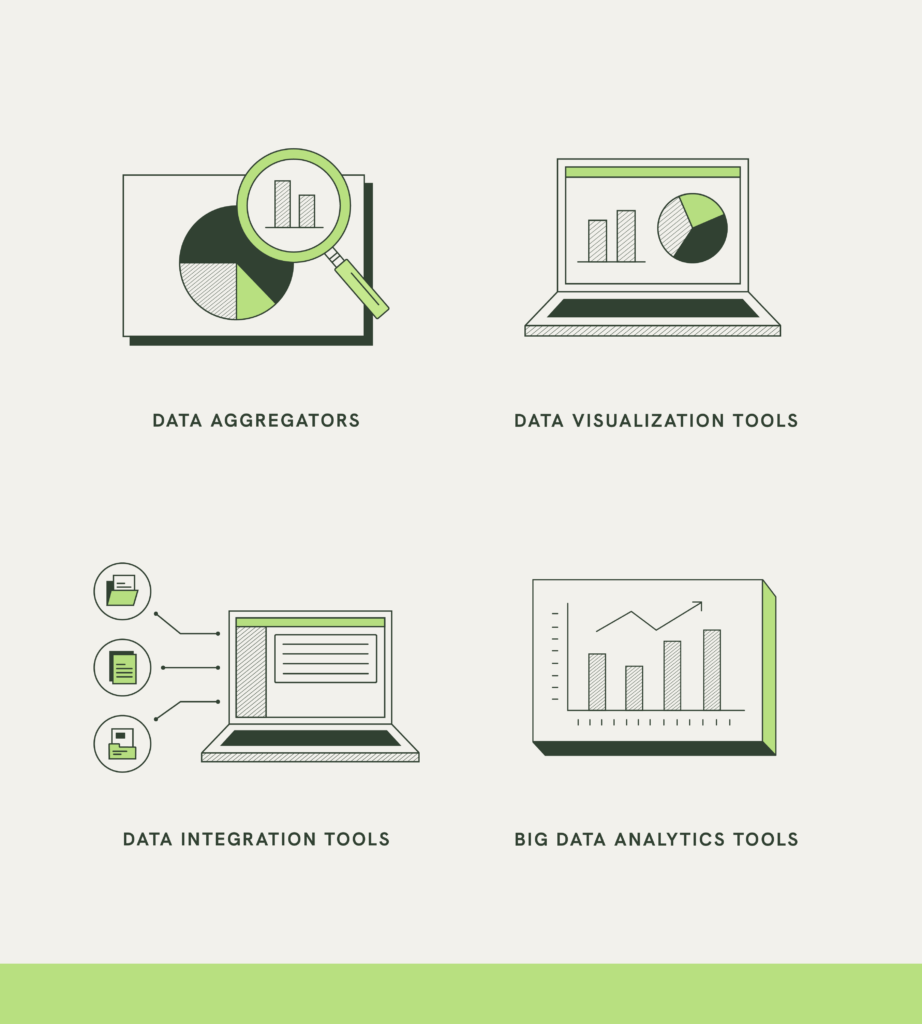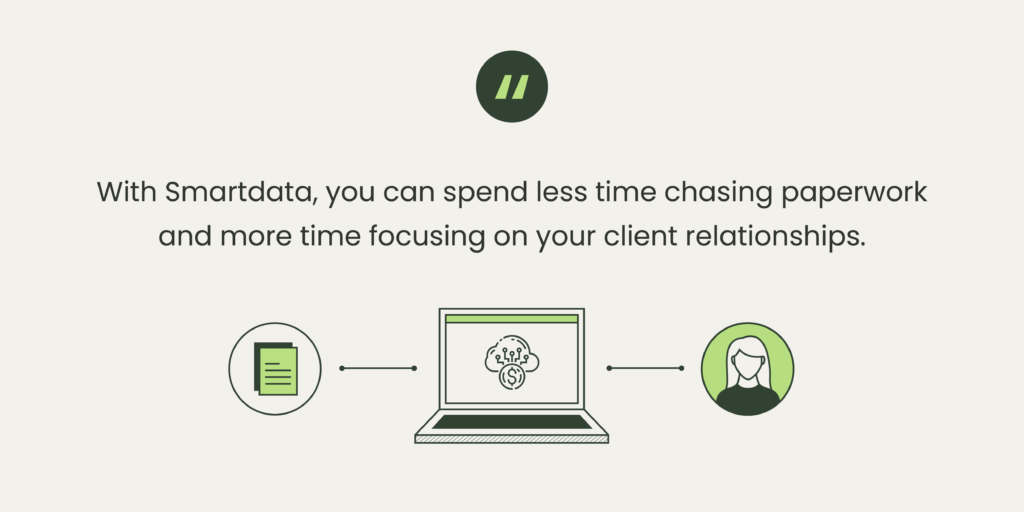The Problem: Onboarding Shouldn’t Be This Hard
As an advisor, you know the struggle: A new client walks through the door, and the first step isn’t only a meaningful conversation—it’s also paperwork. Gathering financial statements, tax documents, and investment records is time consuming. Data entry takes more time. Compliance checks create bottlenecks. The process that should signal the start of a strong advisor-client relationship often feels like an administrative hurdle.
It doesn’t have to be this way.
Smartdata replaces outdated, manual onboarding with a streamlined, digital-first experience—giving you instant access to the data you need in just one click.
The result? Faster onboarding, fewer headaches, and more time for what truly matters: building relationships and providing strategic guidance.
Where Onboarding Breaks Down
Many advisory firms still rely on traditional onboarding processes that create unnecessary friction. Manual document collection forces clients to spend valuable time tracking down financial statements, tax returns, and investment records, delaying the entire process before it even begins.
Once these documents are submitted, you and your team often spend hours manually entering data into different systems, increasing the risk of errors and inconsistencies. Compliance reviews add another layer of complexity, requiring multiple rounds of verification to ensure regulatory requirements are met.
On top of that, fragmented technology ecosystems mean you may be constantly switching between platforms, trying to piece together a complete client profile. These inefficiencies don’t just waste time—they create frustration for both you and your clients, potentially leading to lost business.
How Smartdata Transforms Client Onboarding
Smartdata eliminates these bottlenecks by integrating real-time financial data access, automation, and compliance support into a seamless, digital workflow.

Instead of waiting for clients to provide stacks of paperwork, you can retrieve accurate, up-to-date financial information with just one click. Automated accuracy checks ensure that data is reliable, minimizing compliance risks without the need for excessive manual oversight.
Security is always a concern but never you fear – Smartdata’s robust security features ensure your clients’ data is protected at every stage of the onboarding process, from initial form submission to data storage, so you can confidently meet all compliance requirements.
Plus, Smartdata’s real-time integrations allow you to pull in client data directly from custodians, tax platforms, and other financial systems, eliminating redundant data entry and ensuring that all information is synchronized. With this digital-first approach, you no longer have to rely on slow, paper-based processes, making the entire experience smoother for both your clients and you.
The Impact: More Efficiency, Stronger Client Relationships

By eliminating paperwork, streamlining data collection, and automating compliance, Smartdata empowers you to onboard clients in a fraction of the time. Rather than spending hours—or even days—on administrative tasks, focus on what you do best: providing insights, building trust, and helping clients reach their financial goals.
Faster, frictionless onboarding also enhances the client experience, reinforcing confidence in your capabilities from the very first interaction. When onboarding is seamless, clients feel taken care of, and you gain a competitive edge by delivering a more efficient and modernized service.
Example: Imagine an advisor who previously spent days waiting for tax returns, investment statements, and financial records. With Smartdata, they gain immediate access to this information, reducing onboarding time from weeks to hours—without compromising security or accuracy.
Get Started with Smarter Onboarding
The future of client onboarding isn’t about paperwork. It’s about precision, speed, and seamless integration.













